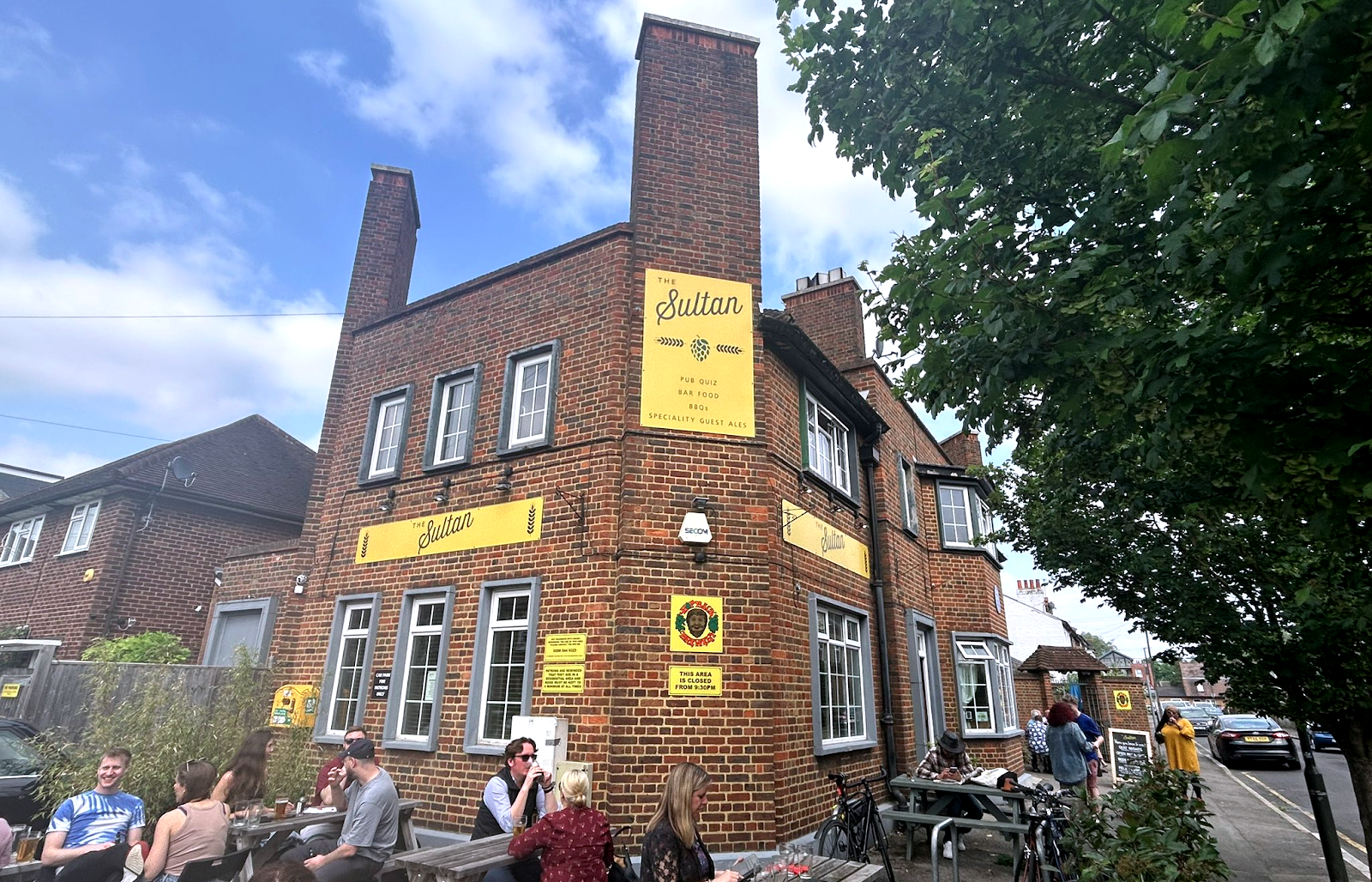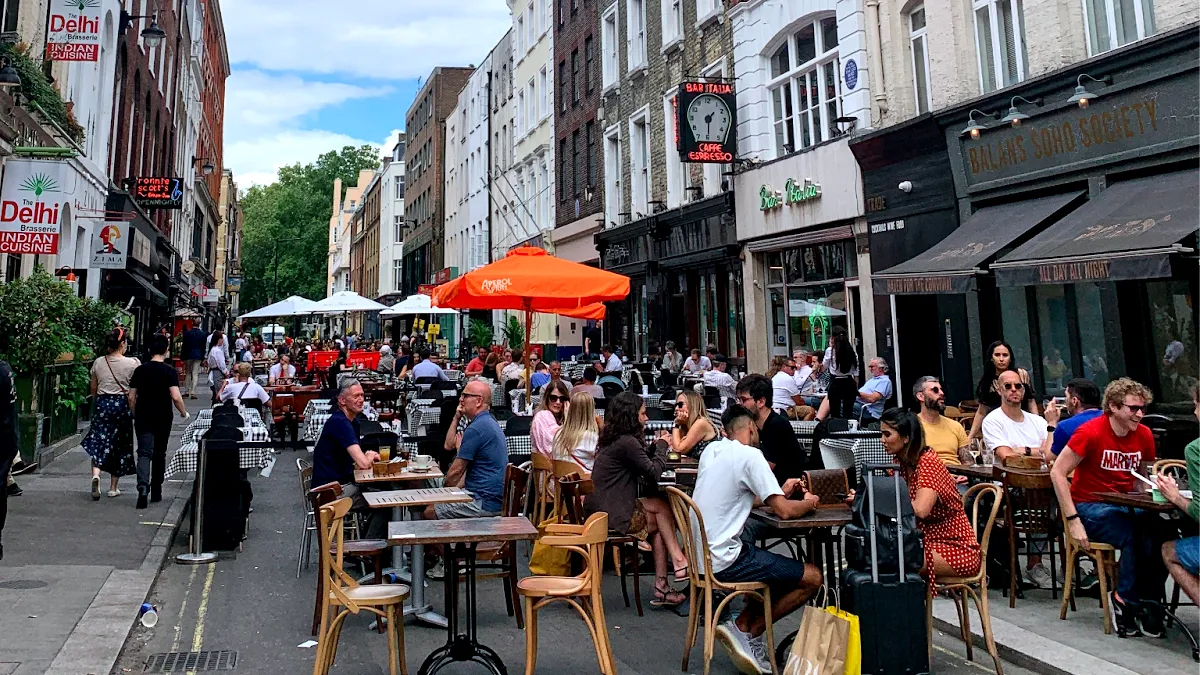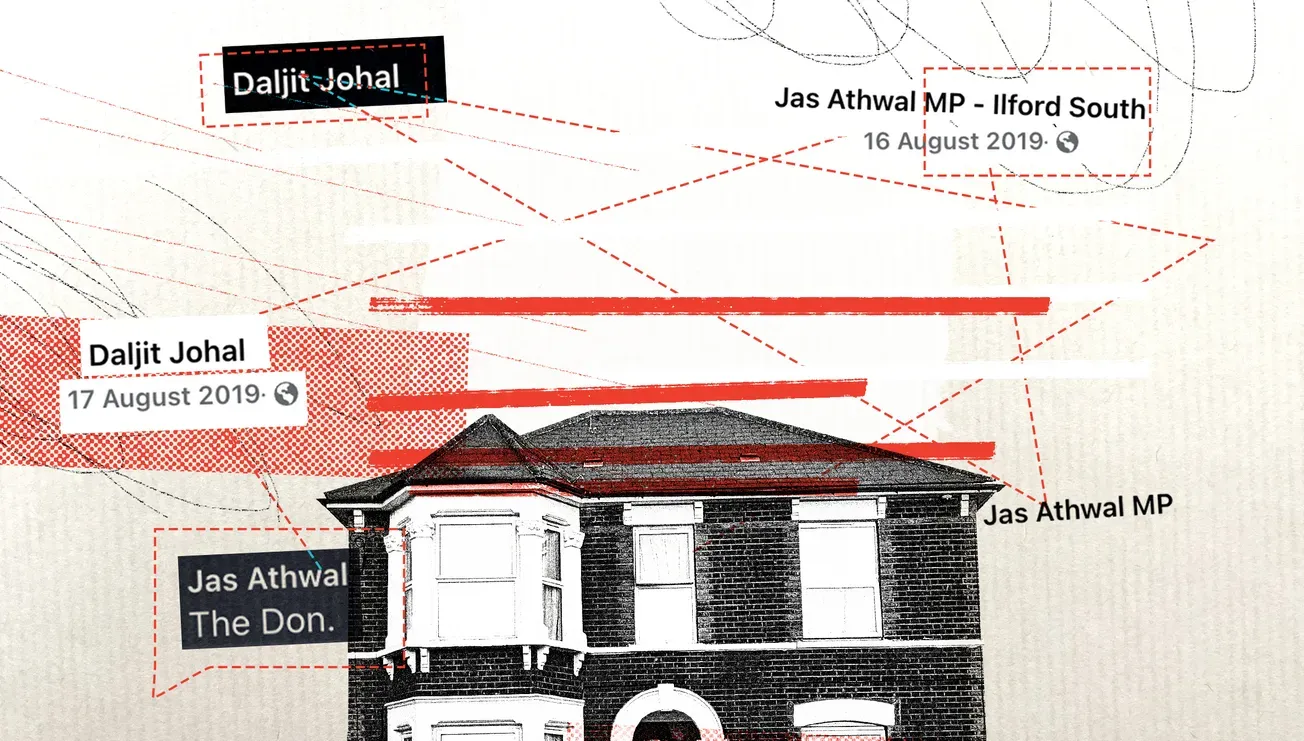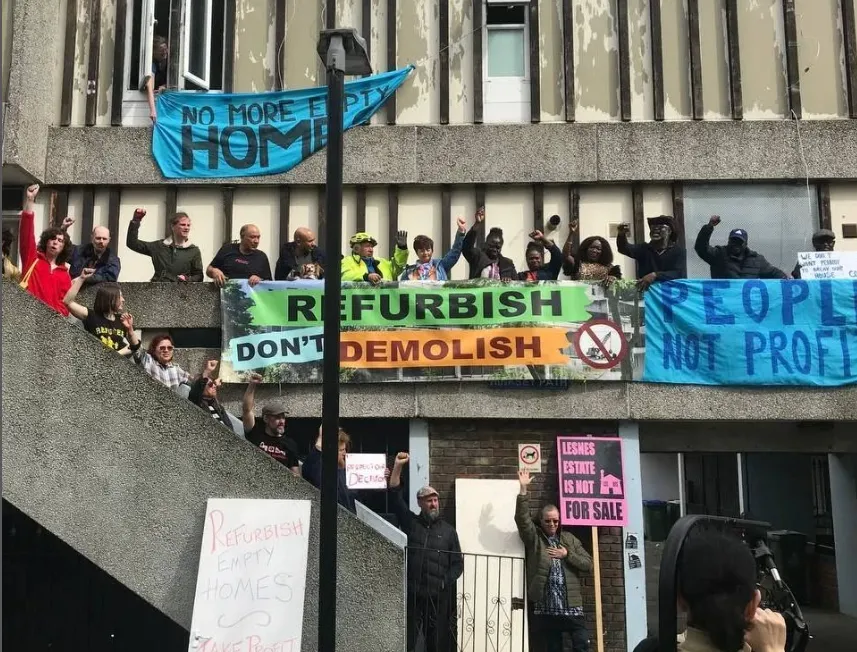Dear Londoners — welcome to your Monday briefing. The glorious weather looks set to continue for the foreseeable (let’s try not to think about the climate change-related reasons for why this might be...) and everything feels, well, a bit nicer — people are happier, nights are longer, grass is greener. Even the trees seem to agree, shaking off their blossom and bursting into verdancy. It’s hard to argue that this isn’t the city at its absolute best.
The only downside of the sunshine is the lack of places in Central to sit back and enjoy it in. Famously, Soho opened up for al fresco dining during the Covid pandemic — if a Sunday existed where I wasn’t sunning myself outside Bar Italia with a Punt e Mes and soda, then I’m not sure I remember it — only for the scheme to end in September 2021, the result of a concerted campaign by local residents. But after an announcement from the mayor on Friday, all of that could be set to change. Read on to find out exactly what we know about the proposals so far.
But before that, I wanted to say a big thank you and welcome to our new supporters. We’re so glad you’ve made the choice to join us — and there’s no way we could do this without you.
If you haven’t already, you can become one of our founding members by subscribing to The Londoner with our 20% early-bird discount. Click here to get an annual membership for the discounted price of £71.20, or click here to get a monthly membership, discounted to £7.16 a month for your first six months. Hurry though — this offer lasts only until the end of April.
— Hannah, The Londoner editor
Big story: Is al fresco dining set to permanently return to Soho?
Topline: Get ready for aperitivo hour — al fresco dining, as well as later opening times for clubs, pubs and bars, is coming back to the capital under new plans from City Hall. The pilot scheme would allow it to overrule council licensing decisions, a move that’s certain to be controversial. We’ve been speaking to sources to bring you the inside track on the new decision.
The context: Announcing the policy at an event alongside chancellor Rachel Reeves on Friday, Sadiq Khan said it was mad that the city was currently “hotter than Ibiza” but had next to zero al fresco eating and drinking offerings. During Covid, outdoor street dining exploded in the capital, particularly in areas like Soho. But after the pandemic, it pretty much ended — due in large part to complaints from locals.
In Soho specifically, local venues fought heavily to keep the al fresco dining arrangements in place, but faced fierce opposition from the Soho Society, a collection of local residents, who saw the noise and traffic disruption as a “betrayal”. Westminster Council eventually sided with the Soho Society and killed outdoor dining in Soho in September 2021, but the saga was seen as a key reason why Labour took the borough from the Tories for the first time in 2022 — and could be the reason they lose it in 2026.
Why does London need it?: City Hall hopes this new policy will allow it to intervene when it judges that a local council is prioritising the complaints of a few residents over the thousands of other Londoners who enjoy eating outside or having venues open later. The Londoner has previously investigated how baseless complaints about a venue can lead to their licences being reviewed. We found, for example, that one in every hundred pubs in the capital almost shut or had its hours limited in 2024 for noise complaints as trivial as “faint giggles” or hypothetical “honking” from traffic.
The lack of formal powers to intervene in licensing disputes has been a long-running frustration for the mayor, with figures at City Hall seeking greater authority in this sphere for over a decade. Historically, it left officials, such as former night tsar Amy Lamé, unable to do much more than send letters to councils on behalf of individual venues trying to influence their decisions. These soft powers were far from consistent, but councils have been resolute about maintaining their rights to manage venue licences.
What will the new plans do?: As it’s still being drawn up, there are at present few concrete details on how the scheme will actually work. But it’ll likely mirror the mayor’s powers to intervene and “call in” certain strategic planning decisions made by local councils. In practice, this may mean that in major decisions, like al fresco dining in Soho — or in particularly egregious individual disputes over noise — the mayor would be able to overrule a local council. If these powers are seen as a success in London, then they could be used as a blueprint for regional mayors in cities across the country.
Any roadblocks?: As with the plans to pedestrianise Oxford Street, the decision has brought the mayor to loggerheads with Westminster Council, who stressed to the London Standard that they “grant the vast majority of licensing applications”. While the council is currently run by Labour, it has a majority of just two seats — and fears of losing seats in the West End over hyperlocal (and well organised) opposition to City Hall’s plans mean the council is unlikely to be happy about the latest announcement.
When will it happen?: The hope from City Hall is for the policy to come into play imminently. The mayor’s new nightlife taskforce is going to spend six weeks designing how the pilot scheme will function before it’s put before parliament and passed by the government as a Bill, a process that often takes around two months. All going smoothly, these changes may be in play by the end of summer. Fingers crossed for a sunny September…
Your news briefing
🚗 After £2.2 billion and 33 years without a new tunnel being built east of Tower Bridge, the Silvertown tunnel linking Newham and Greenwich is now open to drivers. Much of the fanfare was stifled last week as drivers found they’d be paying £4 to use it during peak hours (with exemptions for black cabs and blue badge holders). Sadiq Khan’s decision to build tunnel — and particularly to let HGVs use its bus lane — remains controversial, with critics arguing that it compromises the mayor’s own clean air targets
🔥 See an enormous plume of smoke rising over East London yesterday? A fire broke out at an industrial estate in Dagenham yesterday afternoon, which could be seen for miles around. Ten fire engines and around 70 firefighters were dispatched to tackle the blaze, which destroyed several storage containers and cars, and those in the area were advised to keep their windows closed to avoid inhaling toxic smoke.
🤖 This has been a decidedly bad week for Elon Musk. On Wednesday, his company Tesla reported a 13% drop in global deliveries and, following President Trump’s round of tariffs, he’s now found his UK subsidies under scrutiny. On Friday, Tesla opened a pop-up store on Oxford Street to promote its Cybertruck (which is undergoing a product recall after parts began falling off new models) and was met by Tesla Takedown protestors, who had organised protests in ten UK cities.
Got a story for us to look into? Please get in touch.
Tell us about it...
Really to spill? Come slip your secrets into our new gossip box: the horrible boss at the bar you work at, the beef brewing at your law firm, the spat in the WhatsApp group for your kids’ school. And don’t worry, it’s strictly confidential.
In case you missed it
In our weekend read by Owen Vince, the author embedded with the capital’s growing scale modelling community: think teeny postboxes and dinky Guinness ads. London can feel like a massive, overwhelming place at times, so there’s something reassuring about seeing that world downsized into miniature.
Wining and dining
With endless offerings and non-stop openings, we all know that deciding where to eat and drink in the capital can be fraught. So here, staff writers Miles and Andrew give you the insider guide to the city’s best spots.
One perfect meal: With the demise of Soho’s beloved I Camisa, London’s traditional Italian delis have seemed somewhat of an endangered species of late. However, gems still exist, and our pick of the bunch is Antonio Delicatessen in Lewisham.
Antonio’s maximises all the merits of the Italian lunch counter: fresh ciabatta, antipasti, huge cones of ricotta salata and a vast array of colourful panettone boxes dangling from the ceiling. However, it never manages to fall headlong into Lady and the Tramp-style kitsch. It’s just a place to stop off, maybe grab a glass of wine and eat a panini so good it makes you want to emigrate. We recommend the freshly made cannoli (plain ricotta, of course); marinated anchovy and artichoke sandwich; or grilled sausage and friarielli focaccia.
One perfect pint: Whenever news outlets or influencers write about London pubs, there’s an unnatural gravitation towards pubs in the city’s centre. The inescapable pull towards Central makes sense: it’s an area any one of their readers might know and be able to access. But that means that a huge number of amazing pubs whose only sin is sitting on a backstreet one or two zones too far from the centre are left by the wayside. One such case is the Sultan, in south Wimbledon. A nondescript red brick corner pub in South London, behind its 1930s exterior is somewhere that’s (quietly) one of the best pubs in London.

If you’re a fan of the old-man pub aesthetic, then the Sultan is basically the holy land: stained red carpeting, wood-panelled bars, darts, leather stools everywhere. It also has two big beer gardens. But the thing that really solidifies the Sultan’s supremacy is how cheap it is. And not simply in an “I suppose that’s an okay price for London” way, either — pretty much every pint is cheaper than £5. For that price, instead of an off-brand Wetherspoons, you’re getting award-winning real ales, IPAs and lagers from the Hopback Brewery near Salisbury. The entertainment is thrillingly quaint, too: the pub is often full of Morris Dancers or packed out for folk music nights. It’s a (somewhat) rare sight in the capital these days. The trek out to zone three is worth it for that, if nothing else.
Our favourite reads
From acid house to ancient rites: Jeremy Deller’s enormous, collaborative, unsellable art — Charlotte Higgins, Guardian
For the Guardian’s long read section, Charlotte Higgins profiles the Turner-prize winning artist, Jeremy Deller, as he gears up for a new exhibition in London. Back in 2001, Deller had a thousand volunteers reenact the battle of Orgreave. Now he’s putting something together for the 200th anniversary of the founding of the National Gallery, potentially his “most daring public artwork yet”.
Who funds Reform? — Peter Geoghegan, Prospect Magazine
It’s a question many people are asking. In the past year, Reform UK has moved into the mainstream and is starting to look like an electoral threat, but what does that mean for their funding? In answering this question, Geoghegan’s diligent research takes him to the shadowy world of London private members’ clubs and the capital’s real estate moguls.
To Do List
🎭 In Rhinoceros, Eugène Ionesco’s landmark surrealist play, the inhabitants of a provincial French town are transformed into rhinoceroses in an analogue for fascism and the rise of the Nazis. Now, it’s being staged at the Almeida, where it’ll be showing until the end of the month. The production is directed by Omar Elerian, who respectfully deconstructs the play.
⚽ If you enjoyed last month’s story about Clapton FC, an upstart anti-fascist football club who led a successful coup to oust their owner and take over their ground, you should swing by their last match of the season this coming Saturday. Tickets are a £5 suggested donation, and the sun will be shining.
From the archive
Footage courtesy of Thames TV via YouTube
Tallow chandlers, wherrymen, night wastemen: it can be strange to conceive of just how many professions no longer exist in the modern metropolis, made obsolete by technology or changing societal tastes, and to wonder which jobs from our time might join then. But perhaps nothing embodies a certain era of London more than the rag ‘n’ bone man, once a staple of the city’s working class and now no more than a historical curiosity. In this 1979 interview, a rag ‘n’ bone man and a blacksmith speak about being among the last of their kind.

2 Comments
How to comment:
If you are already a member,
click here to sign in
and leave a comment.
If you aren’t a member,
sign up here
to be able to leave a comment.
To add your photo, click here to create a profile on Gravatar.







Al Fresco dining in Soho? No thanks. Not until traffic is banned.
Spaghetti al Vongnole, with a side helping of SUV fumes and taxi particulates.
I’ll pass.
I think during Covid traffic was banned as well. Could be that it doesn’t have to be a choice between one and the other